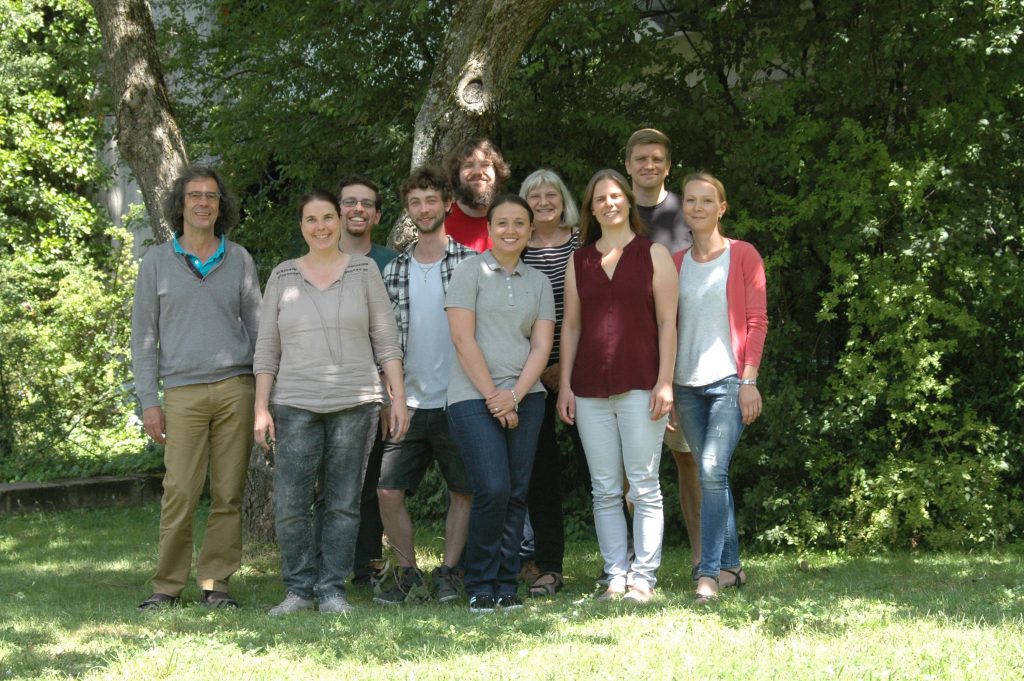Production of the Dolichol N-Glycan Precursor: Monitoring of this Pathway by Quantitative Mass Spectrometry
Protein glycosylation is an essential modification in all kingdom of life. In mammals N-glycosylation occurs in a cotranslational process by which the oligosaccharyltransferase complex (OST) transfers a complex glycan from a dolichol-linked N-glycan precursor en bloc to the N-glycosylation site of a protein. This project focuses on the synthesis of the dolichol-linked N-glycan precursor, which occurs in a very conserved biosynthetic pathway (fig.1). For its generation fourteen sugar residues, seven at the cytosolic side and seven at the luminal side of the ER, have to be sequentially transferred to the membrane anchored dolichol phosphate. Actually, most of the reaction partners are membrane bound and all these reactions have to take place in the two-dimensional reaction space of the membrane, where diffusion is very limited. Nevertheless, this precursor is rapidly assembled. Therefore, it is not very likely that all these processes happen separatedly as bimolecular reactions. It rather involves highly ordered protein complexes each catalyzing several sequential glycan additions.
By accurate quantification of the members of this pathway we want to answer two questions:
- Are these proteins present in relative amounts, which would support the existence of protein complexes?
- Are the relative amounts of the members of this conserved pathway the same across different cell lines and do they change during cell differentiation or upon mutation of certain members?
The ALG proteins, however, are expressed in minute amounts. Therefore, we want to use the most sensitive and reliable mass spectrometric method – multiple reaction monitoring (MRM) (fig.2) – to analyze this pathway. MRM, however, enables only relative quantification. To translate these values into absolute amounts, we will test several strategies like isotopically labeled peptide standards of known amounts (AQUA) or computational based methods like intensity based absolute quantification (iBAQ).
Team

Thomas Ruppert (Pi) has longstanding expertise in mass spectrometric protein characterization and quantitative proteomics.
Roman Sakson successfully completed his Bachelor and Master degree in Molecular Biotechnology at the Heidelberg University. Within the framework of his Master degree he set up a MRM assay to monitor the protein network of Hsp90 and its chaperones. Now he is pursuing his PhD by focusing on the production of the N-glycan precursor using MRM.
For more information on Thomas Ruppert’s lab go to his website.
Collaborations
To translate relative amounts from MRM experiments in absolute amounts we need a protein extract with known amounts of the ALK proteins as a standard. That should be done using the iBAQ strategy with shotgun proteomics of membrane enriched proteins in close collaboration with Sabine Strahl´s group (P8). In aim 3 we will use MRM in collaboration with Christian Thiel´s group (P9) to analyze fibroblasts from CDG patients, in which known ALG enzymes, are impaired.
In close collaboration with Falk Büttner´s group (P03) we will analyze pluripotent stem cells. One question is whether the ALG levels change upon cell differentiation.